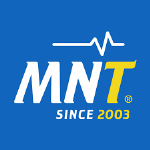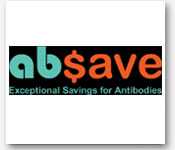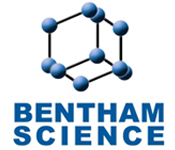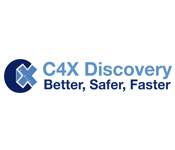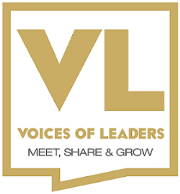Theme: Scientists Unlock: Pushing a Single-Molecule Switch
Stereochemistry 2016
- Welcome Message by Dr. Zbigniew
- Session/Tracks
- Welcome Message by Dr. Stephen
- About Conference
- Market Analysis
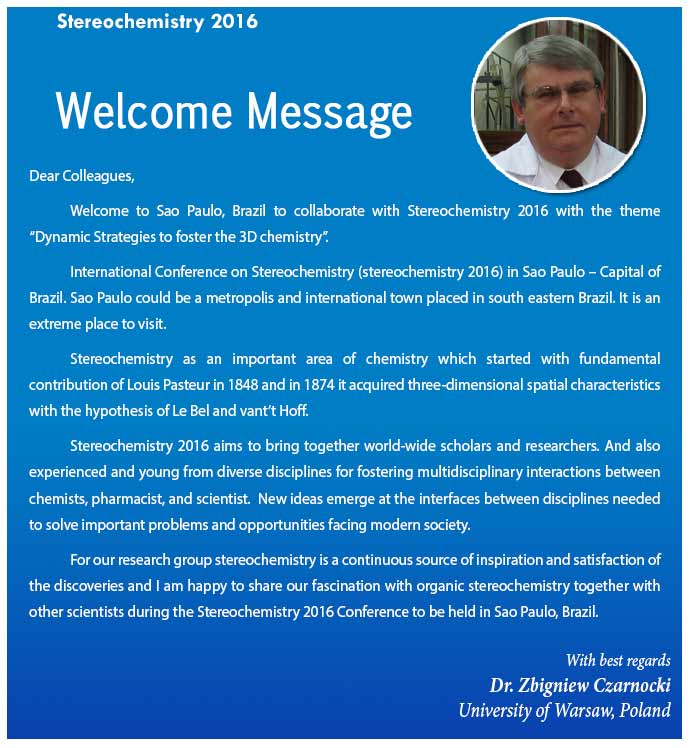
Track 1: Fundamentals of Stereochemistry:
All reactants that gift inorganic reactions are primarily ruled by temperature, that is, temperature is crucial to deciding whether or not or not a specific reaction can proceed. In drug reactions, however, the form of the molecules becomes the crucial issue. little changes within the form or alignment of molecules will verify whether or not or not a reaction can proceed. In fact, one amongst the crucial roles of enzymes in organic chemistry is to lower the temperature needs for chemical reactions. Assumptive the right enzymes are gift; biological temperatures are typically comfortable to permit reactions to proceed. This leaves the stereochemistry of molecules because the dominant consider biological and organic compound is that the form and alignment of the molecular catalysis. The molecular pure mathematics around any atom is depends upon the amount of bonds to alternative atoms and therefore the presence or absence of lone pairs of electrons related to the atom. The statement of a molecule is merely an easy illustration of the order of arrangement of atoms. It doesn't show the three-dimensional structure of the molecule. It's typically left up to the reader to translate the statement into its geometric arrangement.
Related Conferences of Fundamentals of Stereochemistry:
International Conference on Pharmaceutical Chemistry September 05-07, 2016 Frankfurt, Germany: 3rd International Conference on Green Chemistry September 19-21, 2016 Las Vegas, USA: International Conference on Applied Chemistry October 17-18, 2016 Istanbul, Turkey: Organic Semiconductors Conference 22-25 September, 2016, Dubrovnik, United Kingdom: Organometallic Chemistry Conference, 29-02 December, 2016, UK, American Chemical Society, Brazilian Chemical Association, Chemical Institute of Canada
Track 2: Nomenclature System:
Pharmacological activity of compounds rarely principally on their interaction with biological matrices like proteins nucleic acids and bio membranes. All these matrices have complicated three-dimensional structures that are capable to acknowledge specifically the matter molecule in barely one amongst the various attainable arrangements within the three-dimensional area. It's the three-dimensional structure of the receptor drug target that determines that of the potential drug candidate molecules are certain among its cavity and with what affinity. It includes a combined term as well as enantiomers and diastereomers. Enantiomers are molecules associated with one another as a true object to its alikeness. Enantiomers are thus associated with one another through the reflection by the mirror plane, and don't seem to be congruentwith symmetry. Not all object mirror-image pairs represent enantiomers, however solely those that don't seem to be superimposable when any rotation/translation of the total object, or its alikeness. Enantiomeric relation doesn't bear the facet of energy; the conformational isomers existing within the quick interconversion are still thought of enantiomers. For the aim of the determination whether or not 2 conformations are enantiomeric, they're thought of to be rigid. The existence of enantiomers is typically related to a minimum of one chiral centre. Enantiomers have precisely the same energies, and so don't seem to be differentiated by physical measurements apart from optical rotation. Diastereomers are any molecules that have an even constitution, however don't seem to be connected through the mirror reflection operation. Diastereomers may well be compounds with two or a lot of chiral centres and analytical, within which not all chiral centres have opposite configuration to a corresponding chiral centers and structural isomerism in Another Diastereomers don't ought to possess chiral centre they solely have to be compelled to take issue by a spatial distinction not associated with mirror reflection.
Related Conferences of Nomenclature System:
International Conference on Pharmaceutical Chemistry September 05-07, 2016 Frankfurt, Germany: 3rd International Conference on Green Chemistry September 19-21, 2016 Las Vegas, USA: International Conference on Applied Chemistry October 17-18, 2016 Istanbul, Turkey: 27th International Conference on Organometallic Chemistry,17-22 July 2016, Melbourne, Australia: Investment in Green Chemistry Principles,21-23 June,Virginia,US. National Medicinal Chemistry Symposium,26-29 2016,June, Chicago, USA, Chemical Society of Japan, Chemical Research Society of India, Czech Chemical Society
Track 3 : Drug Stereochemistry :
Stereochemistry is the study of the static and dynamic aspects of the three-dimensional shapes of molecules. It has long provided a foundation for understanding organic structure and reactivity. At the same time, stereochemistry constitutes an intrinsically interesting research field in its own right. Many chemists find this area of study fascinating due simply to the aesthetic beauty associated with use of chemical structures, and the intriguing ability to combine the fields of geometry, topology, and chemistry in the study of three-dimensional shapes. In addition, there are extremely important practical ramifications of stereochemistry. Nature is inherently chiral because the building blocks of life (-amino acids, nucleotides, and sugars) are chiral and appear in nature in enantiomerically pure forms. Hence, any substances created by humankind to interact with or modify nature are interacting with a chiral environment. This is an important issue for bioorganic chemists, and a practical issue for pharmaceutical chemists. The Food and Drug Administration now requires that drugs be produced in enantiomerically pure forms, or that rigorous tests be performed to ensure that both enantiomers are safe.
Related Conferences of Drug Stereochemistry:
International Conference on Clinical Chemistry and Laboratory Medicine May 02-03, 2016 Chicago, USA: International Conference on Polymer Chemistry November 14-16, 2016 Atlanta, USA: International Conference on Pharmaceutical Chemistry September 05-07, 2016 Frankfurt, Germany : International Conference and Exhibition on Cheminformatics and System Chemistry July 14-15, 2016 Brisbane, Australia: 23rd Conference on Isoprenoids,4-6 september 2016, Belarus, Europe: 7th International Symposium on Molecular Aspects of Organometallic Catalysis by Sulfides, 22 - 26 May 2016, Utrecht New Zealand: 20th Annual Green Chemistry and Engineering Conference,14-16 June 2016, Portland, Oregon US: Single Entity Electrochemistry, 31 August - 2 September 2016, York, UK, European Chemical Society, Indian Chemical Society, US Chemistry and Biochemistry departments and association
Track 4: Action of Drug in Stereochemistry:
The importance of stereochemistry in drug analysis is gaining greater attention in medical biology practice, and a basic knowledge of the subject will be necessary for clinicians to make informed decisions regarding the use of single-enantiomer drugs. Chirality the most important point is that chiral drugs have 2 structurally similar forms that can behave very differently in biological systems due to their different shapes in 3-dimensional space. These 2 possible forms are termed as enantiomers and the 2 enantiomers of a given chiral drug should be considered 2 different drugs. In biological synthesis chiral drugs synthesises enantiomers of a chiral drug have identical physical and chemical properties in an achiral environment. In a chiral environment, one enantiomer may display different chemical and pharmacology of cancer drug behaviour than the other enantiomer. Because living systems are themselves chiral, each of the enantiomers of a chiral drug can behave very differently in vivo. In other words, the R-enantiomer of a drug will not necessarily behave the same way as the S-enantiomer of the same drug when taken by a patient. The importance of chirality in camptothecin drugs and in all drugs approximately 50% of marketed drugs are chiral, and of these approximately 50% are mixtures of enantiomers rather than single enantiomers. Racemization refers to the conversion of an enantiomerically pure mixture into a mixture where more than one of the enantiomers are present. If the racemization results in a mixture where the enantiomers are present in equal quantities, the resulting sample is described as racemic or a racemate. Mutarotation is the change in the optical rotation because of the change in the equilibrium between two anomers, when the corresponding stereocenters interconvert. Cyclic sugars show mutarotation as α and β anomeric forms interconvert. The optical rotation of the solution depends on the optical rotation of each anomer and their ratio in the solution.
Related Conferences of Action of Drug in Stereochemistry:
World Chemistry Conference August 08-10, 2016 Toronto, Canada; International Conference on Histochemistry and Cytochemistry July 14-15, 2016 Philadelphia, USA; International Conference on Industrial Chemistry June 20-21, 2016 New Orleans, USA; 7th International Conference and Exhibition on Analytical & Bioanalytical Techniques September 29-October 01, 2016, New Orleans, USA; International Conference on Nuclear Chemistry October 20-22, 2016, Rome, Italy; 3rd International Conference on Past and Present Research Systems of Green Chemistry September 19-21, 2016, Las Vegas, USA; International Conference on Pharmaceutical Chemistry September 05-07, 2016 Germany, Internatioference and Exhibition on Cheminformatics and System Chemistry July 14-15, 2016, Brisbane, Australia; 30th International Forum on process Analytical Chemistry Jan 24-27, 2016, Arlington, Virginia; 21st century Stereochemistry conference July 24-29, 2016, Salve Regina University Newport, RI; 42nd International conference on Coordination Chemistry July 3-8, 2016, Brest, France; , The Pittsburgh Conference on Analytical Chemistry and Applied Spectroscopy March 05-10, 2017 Chicago,Illinios; Organometallic Chemistry conference by Gordon Research conference July 10-15, 2016, Salve Regina University Newport, RI; Bioinorganic Chemistry Conference by Gordon Research Seminar Jan 28-31,2016, Four Points Sheraton Ventura, CA, Swedish Chemical Society, Sociedade Quimica del Peru, Sociedade Portuguesa de Quimica
Track 5 : Stereoisomerism and Associated Concepts:
Stereoisomers occur once the ligands have equivalent bonds; however the bonds square measure in several orientations relative to one another. Structural state happens once the bonds square measure totally different. Isomers square measure distinct organic compounds which will have totally different physical properties like colour, crystal structure, and temperature. Molecules of the amino acids of that our proteins square measure designed have the property of being non superimposable on their alikeness. owing to this they're a aforementioned to be chiral or to possess handedness though each alikeness forms square measure on paper doable covalent bonds, such as those for the amino alkanoic acid amino acid higher than, life on earth has evolved in an exceedingly approach that amino acids square measure chiefly of the alikeness kind aforementioned to be left-handed. The reason that almost all amino acids square measure of the left-handed kind isn't famous, however. In the absence of associate degree influence that possesses imbalance like a living system, chemical reactions turn out associate degree equal mixture of each alikeness forms of polymers.
Related Conferences of Stereoisomerism and Associated Concepts:
International Conference on Applied Chemistry October 27-29, 2016 Istanbul, Turkey; International Conference on Nuclear Chemistry October 17-19, 2016 USAly; International Conference on Pharmaceutical Chemistry September 05-07Frankfurt, Germany; World Chemistry Conference August 4-6, 2016 Toronto, Canada; 42nd International Conference on Coordination Chemistry July 03-08, 2016 Brest, France; National Medicinal Chemistry Symposium June 26-29, 2016 Chicago, Sociedad Cubana de Química, Mexican Chemical Society, Sociedade Brasileira de Química
Track 6: Inorganic stereochemistry:
Molecular stereochemistry is a fundamental aspect of all areas of chemistry. It is especially important in inorganic chemistry where the coordination numbers are variable and occasionally quite high. The stereochemistry of co-ordination compounds having both unidentate and multidentate ligands. Steric hindrance occurs when the large size of groups within a molecule prevents chemical reactions that are observed in related molecules with smaller groups. Steric effect in biomolecules arises from a fact that each atom within a molecule occupies a certain amount of space. If atoms are brought too close together, there is an associated cost in energy due to overlapping electron clouds and this may affect the molecule's preferred shape and reactivity. The Chan In gold Prelog priority rules , CIP system or CIP conventions are a set of rules used in polymer chemistry to name the stereoisomers of a molecule. A molecule may contain any number of stereocenters and any number of double bonds, and each gives rise to two possible configurations. The purpose of the CIP system is to assign an R or S descriptor to each stereo centre and an E or Z descriptor to each double bond so that the configuration of the entire molecule can be specified uniquely by including the descriptors in its systematic name. VSEPR theory is used to predict the arrangement of electron pairs around non-hydrogen atoms in molecules, especially simple and symmetric molecules, where these key, central atoms participate in bonding to 2 or more other atoms; the geometry of these key atoms and their non-bonding electron pairs in turn determine the geometry of the larger whole. The Ligand degeneracy is described as the solid angle formed with the metal at the vertex and the hydrogen atoms at the perimeter of the cone. Crystal Field Theory is a model that describes the breaking of degeneracies of electron orbital states, usually d or f orbitals, due to a static electric field produced by a surrounding charge distribution. Stereospecificity is the property of a reaction mechanism that leads to different stereoisomeric reaction products from different stereoisomeric reactants, or which operates on only one of the stereoisomers. Stereospecific polymerization leading to the synthesis of polymer chemistry having a highly ordered structure (stereo regular polymers).
Related Conferences of Inorganic Stereochemistry:
International Conference on Organic Chemistry August 11-13, 2016, Las Vegas, USA; International Conference on Pharmaceutical Chemistry September 08-10, 2016, Frankfurt, Germany; International Conference on Applied Chemistry October 17-18, 2016, Istanbul, Turkey; International Conference on Nuclear Chemistry October 20-22, 2016, Rome, Italy; International Conference and Exhibition on Polymer Chemistry November 14-16, 2016, Atlanta, USA; International Conference on Industrial Chemistry June 20-21, 2016, New Orleans, USA; World Congress on Chromatography September 10-12, 2016, Amsterdam, Netherlands; International Conference on Clinical Chemistry and Laboratory Medicine May 02-03, 2016, Chicago, USA; 3rd International Conference on Past and Present Research Systems of Green Chemistry September 19-21, 2016, Las Vegas, USA; 1st International Conference on Pharmaceutical Bioinformatics (ICPB 2016) Jan 24-26, 2016, Pattaya, Thailand; Organometallic Chemistry conference by Gordon Research conference July 10-15, 2016, Salve Regina University Newport, RI; 42nd International conference on Coordination Chemistry July 3-8, 2016, Brest, France; 5th Annual Pharmaceutical Microbiology Jan 20–21, 2016, London, United Kingdom; 19th International Conference on Biological Inorganic Chemistry July 29-30, 2017, Istanbul, Turkey; 27th International conference on Organometallic conference July 17-22, 2016, Melbourne, Australia; Brazilian Chemical Association, Brazilian Society of Pharmacology and Experimental Therapeutics, AR Eldorado LTDA
Track 7: Reactivity of Dynamic Molecules:
Energy is usually utilized in several contexts, however rarely during a fastidiously outlined means. A rushing automobile has wide mechanical energy that is reworked into heat and work if the auto crashes into a fence. The accumulated snow on a steep mountain has wide Potential energy. that is reworked in AN avalanche, initial into mechanical energy, then into heat and work because the avalanche engulfs forests and cities and eventually involves a stop. In these examples the potential and mechanical energy square measure directed in area, whereas the warmth made consists of random molecular motion. Chemists square measure involved with each physical and chemical process, and therefore the energy related to every. Chemical reactions involve the creating and breaking of valence bonds, and these transformation energy consequences. Heat transfer is that the commonest variety of energy introduced into or free from chemical reactions, but light, electrical current and sound may additionally be concerned. Also if gases square measure made during a reaction, the work done on the environment by volume enlargement becomes a part of the energy balance, and in explosive reactions could also be the main consequenceThe science that investigates the passage of energy from one system to a different, and therefore the transformation of energy from one kind to a different is termed natural philosophy. Physical property isn't the sole physics perform that influences the energy changes, rates and equilibria of chemical and physical transformations.
Related Conferences of Reactivity of Dynamic Molecules:
International Conference on Pharmaceutical Chemistry September05-7,2016 Frankfurt, Germany: 3rd International Conference on Green Chemistry September 19-21, 2016 Las Vegas, USA: International Conference on Applied Chemistry October 17-18, 2016 Istanbul, Turkey: 27th International Conference on Organometallic Chemistry,17-22 July 2016, Melbourne,Australia: symposium on mastering medicinal chemistry, 9 March 2016,Huddersfield, United Kingdom: Investment in Green Chemistry Principles,21-23 June,Virginia,US.1st National Medicinal Chemistry Symposium,26-29 2016,June, Chicago, USA, Pinus Brasil Agro Florestal Ltda, Resineves Agroflorestal LTDA, Socer Brasil Ind e Com Ltda
Track 8: Stereogenic center:
A stereocenter or stereogenic center is an atom bearing groups such that an interchanging of any two groups leads to a stereoisomer. The most common stereocenters are chiral centers and the double-bonded carbon atoms in cis-trans alkenes. Stereoisomerisms are isomeric molecules that have the same molecular formula and sequence of bonded atoms, but differ in the three-dimensional orientations of their atoms in space. This contrasts with structural isomers, which share the same molecular formula, but the bond connections or their order differs. By definition, molecules that are stereoisomers of each other represent the same structural isomer. Stereoisomers have the supramolecular type of chirality. Regioselectivity is the preference of one direction of chemical bond making or breaking over all other possible directions. It can often apply to which of many possible positions a reagent will affect, such as which proton a strong base will abstract from an organic molecule, or where on a substituted benzene ring a further substituent will add. Epimer refers to one of a pair of stereoisomers. The two isomers differ in configuration at only one stereogenic center. All other stereocenters in the molecules, if any, are the same in each. Chirotopicity terms enantiotopic and diastereotopic describe the relationship between a pair of atoms or groups in a molecule. Stereogenic control on industrial scale explains the development of the commercial Synthesis of drugs. Stereoselective synthesis of therapeutic C-Glycosides and also method of continuous variations in Organometallic Chemistry. Chirality without stereogenic centers is the exceptions of some structure of molecules that have no chiral canters. A few are like Allenes, Biaryls, Hexahelicenes and etc. Steric hindrance occurs when the large size of groups within a molecule prevents chemical reactions that are observed in related molecules with smaller groups.
Related Conferences on Stereogenic center and Stereocenter:
International Conference on Pharmaceutical Chemistry September 05-07, 2016, Frankfurt, Germany; International Conference on Applied Chemistry October 17-18, 2016, Istanbul, Turkey; International Conference on Nuclear Chemistry October 20-22, 2016, USA; International Conference and Exhibition on Polymer Chemistry November 14-16, 2016, Atlanta, USA; International Conference on Industrial Chemistry June 20-21, 2016, New Orleans, USA; International Conference and Exhibition on Materials Chemistry March 31-April 01, 2016, Valencia, Spain; World Congress on Chromatography September 10-12, 2016, Amsterdam, Netherlands; International Conference on Clinical Chemistry and Laboratory Medicine May 02-03, 2016, Chicago, USA; 3rd International Conference on Past and Present Research Systems of Green Chemistry September 19-21, 2016, Las Vegas, USA; World Chemistry Conference August 08-10, 2016, Toronto, Canada; International Conference on Histochemistry and Cytochemistry July 14-15, 2016, Philadelphia, USA; International Conference on Industrial Chemistry June 20-21, 2016, New Orleans, USA; 7th International Conference and Exhibition on Analytical & Bioanalytical Techniques September 29-October 01, 2016, Miami, USA; 1st International Conference on Pharmaceutical Bioinformatics (ICPB 2016) Jan 24-26, 2016, Pattaya, Thailand; ; 5th Annual Pharmaceutical Microbiology Jan 20-21, 2016, London, United Kingdom; Drug Development , Pharmacokinetics and Imaging Jan 18-22, 2016, Oxford, United Kingdom. Bioinorganic Chemistry Conference by Gordon Research Seminar Jan 28-31, Four Points Sheraton Ventura, CA; 19th International Conference on Biological Inorganic Chemistry July 29-30, 2017, Istanbul, Turkey; Brazilian Association of Chemical Engineering, Argentinian Association for Chemical Engineers, Colombian Association of Chemical Engineering
Track 9: Supramolecular Chemistry:
Supramolecular Chemistry is all concerning interactions between molecules however they'll recognise one another, assemble and performance on a molecular scale. It provides a bottom up approach to nano scale systems with applications starting from biology to materials science. Refers to the realm of chemistry beyond the molecules and focuses on the chemical systems created of adiscrete range of assembled molecular subunits or elements. The forces accountable for the special organization could vary from weak to strong valence bonding, only if the degree of electronic coupling between the molecular elements remains little with respect to relevant energy parameters of the element. While ancient chemistry focuses on the bond, supramolecular chemistry examines the weaker and reversible non covalent interactions between molecules. These forces include hydrogen bonding, metal coordination, hydrophobic forces, Vander Waals forces, pi-pi interactions and electricity effects. At intervals nanotechnology the active directional transport of molecules or charges is extremely necessary. Chemical reactions involve the creating and breaking of valence bonds, and these transformation energy consequences. Heat transfer is that the commonest variety of energy introduced into or free from chemical reactions, but light, electrical current and sound may additionally be concerned.
Related Conferences of Supramolecular Chemistry:
International Conference on Applied Chemistry October 27-29, 2016 Istanbul, Turkey: International Conference on NuclearChemistry October 17-19, 2016 USA: International Conference on Pharmaceutical Chemistry Sept 05-07, 2016 Frankfurt, Germany: World ChemistryConference August 4-6, 2016 Toronto, Canada National Medicinal BioChemistry conference, 26-29 June 2016, Chicago (US): National Medicinal bioChemistry Symposium, 26-29 June 2016,Chicago USA: Organometallic Chemistry Conference 2016 29, November 2016 - 02 December 2016,Tampa Florida, United Kingdom: Association of Chemical Engineers of Uruguay, Society of Chemical Manufacturers and Affiliate, Canadian Society of Clinical Chemists
Track 10: Stereochemistry of carbon nanotubes:
Carbon nanotubes of certain stereochemistry have been found to be conductive. Others have been found to be excellent transistors, and together Nano electronic devices have already been formed from them including logic gate circuits. Two synthetic approaches have been tried, in supramolecules namely plasma arcing in the presence of additives and ball milling. In plasma arcing, cathode deposits are altered by the presence of naphthalene in the Nano material. The mixture of nanotubes so formed has a larger average void size than that formed in the absence of naphthalene. The results support proposed mechanisms of nanotube formation which involve growth by incorporation of carbon atoms into open tubes. They also show that naphthalene can be directly incorporated into fullerene black and thereby increase the number of hexagonal sheet structure of molecules in the carbon deposit. Work so far in ball milling has been confined to studies of the destruction of graphite crystalline phases. Carbon nanotubes are related to fullerenes ("Bucky balls") the spherical and oval shaped molecules. In the separation of carbon nanotubes ultracentrifuge technique was used. Single-walled carbon nanotubes (SWNTs) are high aspect ratio cylinders of carbon (~1 nm in diameter) whose walls are one atomic layer thick and have an atomic arrangement analogous to graphite. Plasma arcing and ball milling are also the electronic application ns of carbon nanotubes and it has many applications in hydrogen storage, in batteries, in electronics, in the high Young’s Modulus, as actuators, nano structures and in other Nano machines.
Related Conferences of Stereochemistry of Carbon nanotubes:
International Conference on Nuclear Chemistry October 20-22, 2016, USAe, Italy; International Conference on Applied Chemistry October 17-18, 2016, Istanbul, Turkey; International Conference and Exhibition on Polymer Chemistry November 14-16, 2016, Atlanta, USA; 3rd International Conference on Past and Present Research Systems of Green Chemistry September 19-21, 2016, Las Vegas, USA; International Conference on Pharmaceutical Chemistry September 05-07, 2016, Frankfurt, Germany; International Conference on Organic Chemistry August 11-13, 2016, Las Vegas, USA; International Conference and Exhibition on Cheminformatics and System Chemistry July 14-15, 2016 Brisbane, Australia; World Chemistry Conference August 08-10, 2016, Toronto; EUCHEM Conference on Stereochemistry, May 01-06, 2016, Brunnen, Switzerland; ; Society for Analytical Chemistry, Society of Chemical Industry, Royal Society of Chemistry
Track 11: Stereochemistry of enzymes:
Enzymecatalyzed reactions are almost always completely stereoselective. In other words, enzyme catalyst reactions that form only a single stereoisomer. The chemistry associated with living organisms is called biochemistry. The isolation and purification of an enzyme makes it possible to consider the reaction which it catalyses from standpoint of organic chemistry, it can be considered as a reaction between organic chemistry molecules in which the catalyst happens to be a protein. Such a consideration allows the tools of physical organic chemistry to be applied to the study of enzyme mechanism. Stereospecificity in the enzymology labilization of one of the 4-methylene protons of pyridoxamine has been demonstrated in the transamination of pyridoxamine catalysed by apoglutamate-oxaloacetate transaminase. Spectrum analysis is analysis in terms of a spectrum of frequencies or related quantities such as energies, eigenvalues, etc. Synthesis and identification of some enzymes was done by keto reductase activity.
Related Conferences of Stereochemistry of enzymes:
World Chemistry Conference August 08-10, 2016, Toronto; International Conference on Pharmaceutical Chemistry September 05-07, 2016, Frankfurt, Germany; International Conference on Applied Chemistry October 17-18, 2016, Istanbul, Turkey; International Conference on Nuclear Chemistry October 20-22, 2016, USA; International Conference and Exhibition on Polymer Chemistry November 14-16, 2016 Atlanta, USA; International Conference on Industrial Chemistry June 20-21, 2016, New Orleans, USA; International Conference on Histochemistry and Cytochemistry July 14-15, 2016, Philadelphia, USA; International Conference on Organic Chemistry August 11-13, 2016, Las Vegas, USA; 7th Southeast Enzyme Conference, April 16, 2016, Atlanta, GA; 19th International Conference on Biological Inorganic Chemistry July 29-30, 2017, Istanbul, Turkey; EUCHEM Conference on Stereochemistry, May 01-06, 2016, Brunnen, Switzerland; National Medicinal Chemistry Symposium, June 26-29, 2016, Chicago, US; 46th World Chemistry Conference, July 09-14, 2017, Sao Paulo, Brazil; United Kingdom; Chemical society, Real Sociedad Española de Quimica, Royal Society of Chemistry
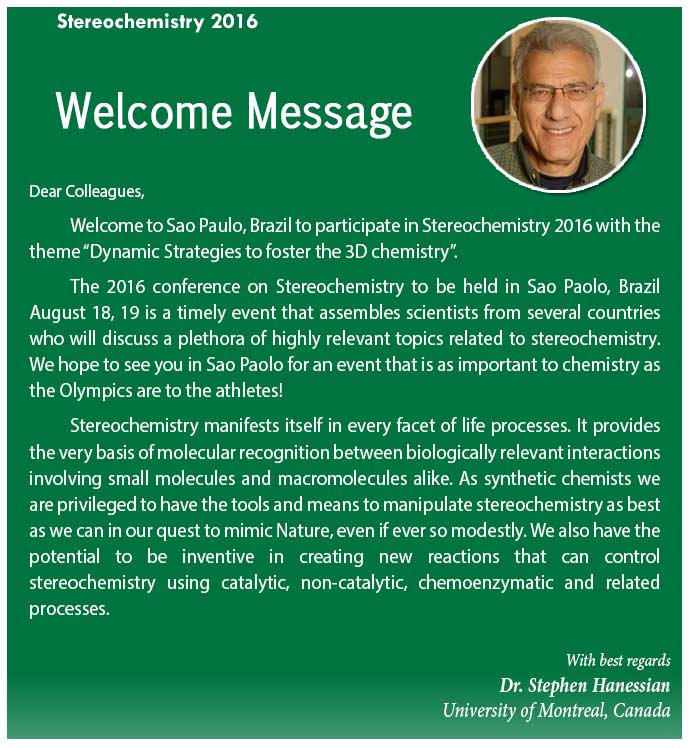
On behalf of Stereochemistry 2016 organizing committee, we invite chemists, researchers, professors, scientific communities, delegates, students, business professionals and executives to attend the “International Conference on Stereochemistry” which is going to be held during August 18-19, 2016 at Sao Paulo, Brazil.
In the light of this theme, the conference series aims to provide a forum for international researchers from various areas of 3D chemistry like stereoisomers, chirality, optical activity, and bonding concepts by providing a platform for critical analysis of new data, and to share latest cutting-edge research findings and results about all aspects of three-dimensional chemistry.
The current meet will be a multitudinal gathering which presents major areas such as chirality of molecules, optical activity and purity, configuration and supramolecularchemistry. The forum of Scientists, students and researchers from all corners of the globe, come together to discuss future scope. Each session of the meeting will be included with expert lectures, poster and discussions, join us to inculcate innovative ideas for the development of new 3D chemicals with desired structure and chemical value.
Approximately 50% of marketed drugs are chiral, and of these approximately 50% are mixtures of enantiomers rather than single enantiomers.
In 2001, of the $ 410 billion in worldwide sales of formulated pharmaceutical products $ 147 billion belongs to single enantiomer drugs. The worldwide market for dosage forms of single-enantiomer drugs was $123 billion in 2000, increasing by 7.2%, from $115 billion in 1999.
Worldwide, the market for chiral fine chemicals sold as single enantiomers was $6.63 billion in 2000 and is expected to grow at a rate of 13.2% annually, reaching $16.0 billion in 2007. The drug industry is the driving engine for this strong growth, accounting for 81.2% of the total, equal to an overall worth of $5.38 billion, in the year 2000. The remaining $1.25 billion is divided among such uses as agricultural chemicals.
Geographically, the U.S. is the biggest consumer of enantiomeric fine chemicals, contributing to a total North American share of $3.98 billion, making up 60% of the total. European and Asian consumption of enantiomeric fine chemicals is not expected to grow as fast, with the North American share rising to 66.9% of the market in 2007, equivalent to $10.7 billion.
ConferenceSeries Ltd organizes 1000+ Global events every year across the globe with support from 1000+ more scientific societies and Publishes 700 Open access journals which contains over 50000 eminent personalities, reputed scientists as editorial board members.
Market Analysis:
Chemistry is that the branch of science involved with the substances of that matter consists the investigation of their properties and reactions, and also the use of such reactions to make new substances. Several different edges from Chemistry Conferences and Exhibitions square measure like Media interaction and press conferences, Quality marketing research opportunities, the possibility to beat objections to purchasing choices and conferencing opportunities to search out additional concerning future trade trends.
Stereochemistry 2016 International Conference on Stereochemistry is going to be held during August 18-19, 2016 in Sao Paulo, Brazil with the theme “Dynamic Strategies to foster the 3D chemistry”. The current meet will be a multitudinal gathering which presents major areas such as chirality of molecules, optical activity and purity, configuration and supra molecular chemistry.
Stereochemistry 2016 is an international platform for presenting research about chemistry and related fields thus contributes to the dissemination of knowledge for the benefit of both the academia and business. This event brings together the top professionals in the field along with the highly affiliated professors to explore the advancements and latest applications achieved in the field of Chemistry. Stereochemistry 2016 discusses various fields of chemistry employed in chemical industry, Organic chemistry, Inorganic chemistry, Applied chemistry and Pharmaceutical chemistry fields which marks the support for the advanced and much needed research by their study on various topics. The scientific program will focus on current advances in the research and use of chemistry and related with particular focus on its roles and applications in various field.
Why Sao Paulo?
Sao Paulo could be a metropolis and international town placed in south eastern Brazil. It's the foremost inhabited town in Brazil, within the Americas, within the Western and hemisphere, and also the world's thirteenth largest town by population. The metropolis is anchor to the São Paulo metropolitan space, stratified because the most inhabited metropolitan space in Brazil, the second within the Americas and also the seventh within the world. São Paulo is that the capital of the state of São Paulo, Brazil's most inhabited and wealthiest state. The name of the town honors Saint Paul of skeletal structure. In step with a report from 2011, São Paulo was expected to own the third highest economic process within the world between 2011 and 2025, when London and capital of Mexico. São Paulo is taken into account the "financial capital of Brazil”.
The World Congress are going to be control in São Paulo, one amongst the biggest and most dynamic cities within the world that currently receives over 90,000 events a year. This philosophical system town isn't restricted to a various population: it boasts first-world infrastructure, first hotels, glorious gastronomy, first museums and lots of culture, music, shows and attractions for each cultural background, age, style and budget.
Why Brazil?
The Brazilian Chemical Society had a novel stand at the exhibition honest of the event, that showed Brazil because the next destination of the worldwide chemistry event. Typical gifts of Brazilian culture were distributed. Also, promotional videos granted by Embratur and therefore the São Paulo Convention and guests Bureau were displayed showing the richness of Brazilian culture, regional beauties, and tourer attractions.
Conference Highlights:
Fundamentals of Stereochemistry
Nomenclature System
Action of Drug in stereochemistry
Stereoisomerism and Associated Concepts
Reactivity of Dynamic Molecules
Stereogenic centre or stereo center
Stereochemistry of carbon nanotubes
Stereochemistry of enzymes
Why to attend?
With members from around the world focused on learning about 3D shapes and dynamics of molecules, Drug stereochemistry, chirality, isomerisms of molecules, optical activity of molecules, stereochemistry of inorganic compounds, stereogenicity and stereospecificity of molecules, carbon nanotubes role in stereochemistry and supramolecular molecular structures of chemistry. This is your single best opportunity to reach the largest assemblage of participants. Conduct demonstrations, distribute information, meet with current and potential customers, make a splash with a new product line, and receive name recognition at this 2-day event. World-renowned speakers, the most recent techniques, tactics, and the newest updates in fields are hallmarks of this conference.
Target Audience:
Directors, Presidents& CEO are from companies, Chemical Instrument Vendors Professors and Students from Academia in the study of Organic, Inorganic and Pharmaceutical chemistry. Delegates from various Pharmacy& Instrumental companies from all over the world. Research fellows and many more from leading universities.
Market Analysis:
Chemistry conferences attract acknowledged world category scientists, researchers, policy manufacturers and students by organizing international symposia. Analysis from varied distinguished establishments reaches these platforms that they are mentioned here with a view to promote knowledge dissemination.
Global chemical industry consists of a very diverse and complicated range of products. In terms of revenue, it is one of the world’s largest markets. Across the chemical industry, expected worth is estimated to be around $3 trillion per year with relatively flat revenue growth in the EU and US. The compound annual growth rate (CAGR) over the five years spanning 2006-2010 has been 5%. At the low end, Europe only grew at about 1% in 2010 with Asia representing the region with the largest CAGR at 10% in 2010. From the years 2010-2015, the chemicals market is expected to gain momentum and is forecasted to grow at a8% compound annual growth rate. The market was estimated at $3.9 billion in 2013 and is expected to reach $5.9 billion by 2018, growing at a CAGR of 8.7% from 2013 to 2018.North America dominated the global chemistry market in 2013, followed by Europe and Asia. A report done circa 2003 showed the market around 300 from around 2008-2010 at $350 million. The global Research and Analysis industry is estimated to reach USD 17 billion by 2010, of which USD 12 billion (almost 70%) would be outsourced to India alone. Transparency Market Research has published a new report titled “Flow Chemistry Market - Global Industry Analysis, Size, Share, Growth, Trends and Forecast, 2014 - 2020.” According to the report, the global flow chemistry market was valued at US$ 808.6 mn in 2013 and is projected to reach US$ 1,526. Mn in 2020, expanding at a CAGR of 9.5% between 2014 and 2020.The global market of chemistry is now trending towards quality products and processes with least impact on environment. The global chemical industry is estimated to be US $2.4 trillion dollars contributing significantly in the market growth of US, Europe, and Middle East Countries. The demand for chemical products is highest in the Asia, Japan and Korea. The annual US chemical output alone is US $750 billion dollars. The global chemical industry market is expected to grow at a CAGR of 3.7% by 2020.
Approximately 50% of marketed drugs are chiral, and of these approximately 50% are mixtures of enantiomers rather than single enantiomers. In 2001, of the $ 410 billion in worldwide sales of formulated pharmaceutical products $ 147 billion belongs to single enantiomer drugs. The worldwide market for dosage forms of single-enantiomer drugs was $123 billion in 2000, increasing by 7.2%, from $115 billion in 1999.
Major Brazilian Chemical societies:
Sociedade Brasileira de Química
Brazilian Chemical Association (ABIQUIM)
Brazilian Society of Pharmacology and Experimental Therapeutics
AR Eldorado LTDA
Pinus Brasil Agro Florestal Ltda
Resineves Agroflorestal LTDA
Socer Brasil Ind e Com Ltda
Brazilian Association of Chemical Engineering
Major Chemical associations in South America:
Argentinian Association for Chemical Engineers
Colombian Association of Chemical Engineering
Association of Chemical Engineers of Uruguay
Major chemical associations in USA:
American Chemical Society
Society of Chemical Manufacturers and Affiliate
Chemical Society of Peru
Canadian Society of Clinical Chemists
Chemical Institute of Canada
Chemical Society of Mexico
Society for Analytical Chemistry
Society of Chemical Industry
American Association for Clinical Chemistry
Royal Society of Chemistry
Chemical society
Conference Highlights
To share your views and research, please click here to register for the Conference.
To Collaborate Scientific Professionals around the World
| Conference Date | August 18-19, 2016 | ||
| Sponsors & Exhibitors |
|
||
| Speaker Opportunity Closed | Day 1 | Day 2 | |
| Poster Opportunity Closed | Click Here to View | ||
Useful Links
Special Issues
All accepted abstracts will be published in respective Our International Journals.
- Journal of Modern Chemistry & Applications
- Journal of Natural Products Chemistry & Research
- Journal of Organic Chemistry: Current Research
Abstracts will be provided with Digital Object Identifier by








